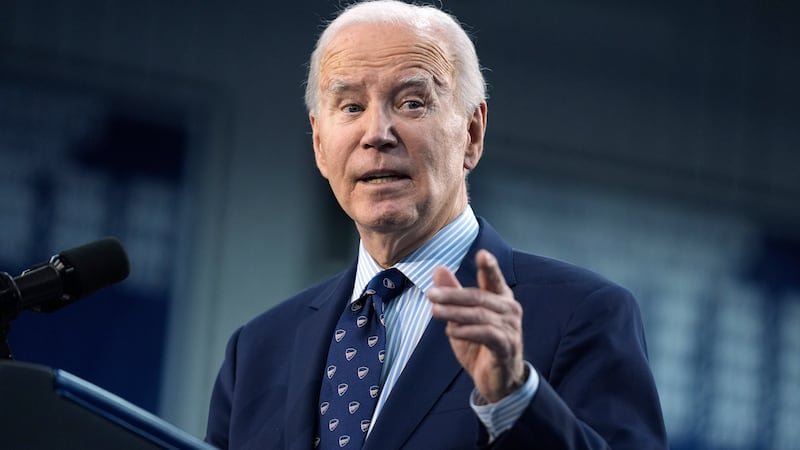The U.S. economy under President Joe Biden has seen remarkable milestones—record job creation, solid economic recovery post-pandemic, and historic shifts towards clean energy and infrastructure investment. Yet, despite these achievements, Biden’s popularity has remained stubbornly low among many Americans.
What explains the misunderstanding? How can an administration preside over such positive economic indicators and cannot win over public opinion? This blog explores the state of the Biden economy through three lenses—economic growth, the job market, and public perception—to unravel this complex puzzle.
What’s Driving Economic Growth in the Biden Economy?
Rebound from COVID-19 Disruptions
When President Biden took office in January 2021, the United States was emerging from one of the most tumultuous economic periods in modern history. The COVID-19 pandemic had decimated jobs, disrupted supply chains, and stalled economic activity globally. Biden’s economic policies began with a focus on recovery, including the $1.9 trillion American Rescue Plan aimed at giving individuals and businesses the tools they needed to rebound.
Infrastructure and Clean Energy Investments
One hallmark of Biden’s approach to economic growth has been his focus on long-term investments. The Bipartisan Infrastructure Law, passed in late 2021, allocated $1.2 trillion to revamp roads, railways, bridges, and broadband. Similarly, the Inflation Reduction Act channeled billions into clean energy projects, pushing the U.S. toward a more sustainable economy while spurring job creation in green industries. These investments showcase a bold vision for economic transformation.
Strong GDP Numbers
Under Biden’s leadership, GDP growth has remained steady. By the end of 2022, the U.S. economy had grown by 2.1%, outperforming several other advanced economies. Sectors such as technology, healthcare, and renewable energy remain powerful drivers of GDP, showcasing resilience in a volatile global economic environment.
However, while these metrics signal economic strength, they haven’t entirely translated into public confidence.
The Job Market Under Biden: A Tale of Record Gains
Historic Job Creation
Biden often touts his record-breaking pace of job creation. By early 2023, the U.S. economy had added over 12 million jobs since the president took office—a recovery many describe as unparalleled. These numbers reflect a sharp rebound in sectors like hospitality, retail, and manufacturing, which endured pandemic job losses.
Low Unemployment Rates
The unemployment rate has hovered at historic lows, reaching 3.8% in August 2023. Such low unemployment levels are not only reflect an improving economy but also a signal of broad-based recovery. For context, rates are now lower than they were in the pre-pandemic era.
Wage Growth and Labor Market Concerns
Alongside job growth, wages for many Americans have also risen. Average hourly earnings have experienced year-over-year increases as businesses compete for workers and adapt to post-pandemic labor shortages. However, persistent inflation has undercut these gains for many, leaving workers feeling like their paychecks don’t stretch as far as they should.
This tension between economic progress and individual financial strain is one of the reasons why many Americans remain skeptical of the administration’s achievements.
Public Perception and the Biden Economy
Why misunderstanding?
Despite strong performance on paper, polling consistently shows President Biden’s approval ratings hovering in the low 40s. One of the main reasons for misunderstanding lies in public perception. Many Americans feel the pinch of high costs—ranging from rent to groceries—despite inflation easing in recent months. These everyday struggles often overshadow broader, positive economic trends.
Partisan Narratives
Partisan narratives also play a critical role in shaping public opinion. While Democrats tout Biden’s economic achievements, Republicans often frame his policies as contributing to inflation or exacerbating national debt. Media coverage amplifies these narratives, creating entrenched divides in how Americans perceive the Biden economy.
Broader Cultural Discontent
Economic health is only part of the equation. Public discontent often encompasses broader cultural and political issues—from debates over healthcare to climate policy—where partisan divisions run deep. For many voters, the economy is a lens through which these deeper grievances are projected.
What Comes Next for the Biden Economy?
The Biden administration faces significant challenges as it seeks to realign public perception with economic reality. Here are some potential strategies:
Communicating Wins Effectively
Clear, consistent messaging about the Biden administration’s economic achievements is essential to bridge the perception gap. Simplifying data into relatable stories—such as how a new bridge is affecting local business—can help humanize the numbers.
Addressing Financial Main Point
Tangible steps to tackle cost-of-living concerns, such as affordable housing initiatives or expanded childcare programs, are critical. When economic policies directly impact household budgets, they can shift public sentiment.
Strengthening Bipartisan Collaboration
Passing policies with bipartisan support, akin to the infrastructure package, can foster greater trust among moderates and independents. This approach helps counter narratives that the administration is too partisan.
Building Economic Resilience
Focusing on long-term investments in technology, education, and clean energy can cement Biden’s legacy as an economic reformer. While this won’t win over critics immediately, it could bolster history’s verdict on this period of governance.
Is the Biden Economy a Paradox?
From a political perspective, the Biden economy represents a paradox. On the one hand, key markers like job creation, economic growth, and innovation all point to success. Yet, on the other hand, many Americans feel left behind or disillusioned. For public policy researchers, political analysts, and economic enthusiasts, understanding this divide is essential to chart how economic realities intersect with the perception of leadership.
Ultimately, the Biden economy invites us to ask bigger questions. How should we measure success in an era where economic progress is often eclipsed by individual challenges? And what role does leadership play in bridging the gaps between perception and reality?

